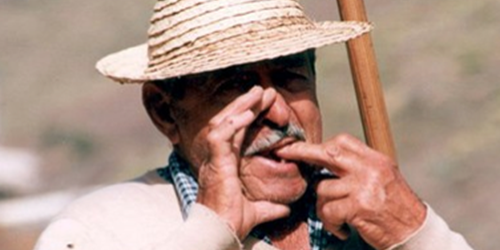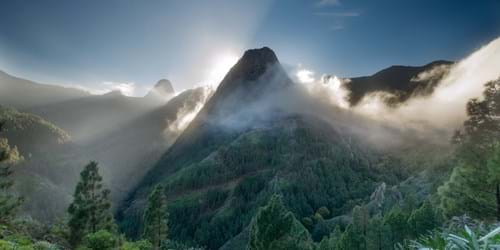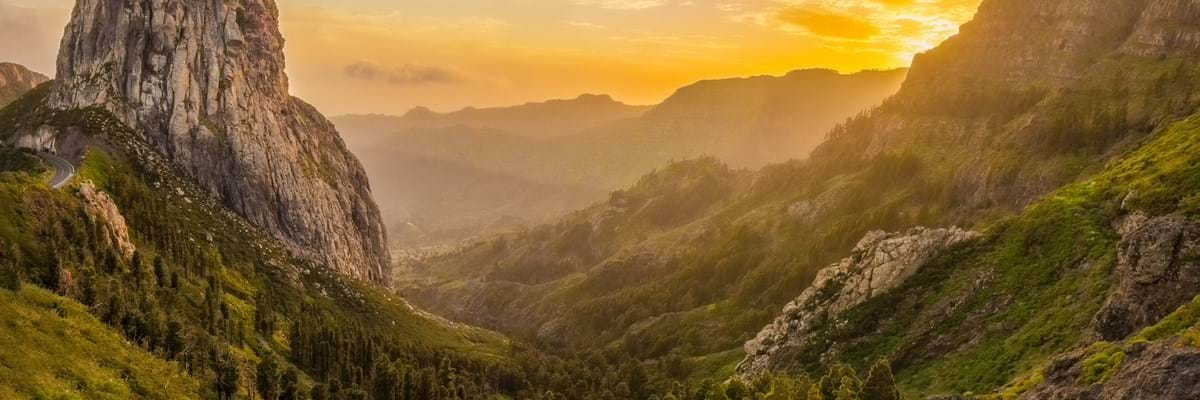Sometimes it is the good old-fashioned way of communication that’s the best – we all know that emails, texts and poor signal on mobile phones do not always convey a message in the best way – but how about whistling?
On La Gomera, islanders still use the centuries-old Silbo Gomero whistle to communicate across the valleys and visitors can learn about the whistle – a heritage recognised by UNESCO – as well as exploring the Canary Islands’ biosphere reserves and cultural landscapes which have long intrigued naturalists and historians and are also now conserved by UNESCO.
Whistling was a necessity on the island before roads and phones (there were no roads in the middle of La Gomera until the 1960s), and the Silbo Gomero whistle continues to be handed down the generations.
News of births, deaths and marriages spreads as quickly as any social media, communicated by the whistle across deep ravines by more than 20,000 islanders, was recognised by UNESCO as an Intangible Cultural Heritage of Humanity in 2009.

Learn about the whistle on tours of La Gomera, the second smallest Canary Island, where it is included in the school curriculum and replicates the islanders’ Castilian Spanish; two whistles replace the five Spanish vowels and four represent consonants, distinguished by pitch and whether they are interrupted or continuous.
It is amusing to find that Siblo Gomero sounds rather similar to the noise made by those animated TV characters The Clangers. It is also fun for visitors to learn how to order wine with a whistle, and join a game of hide and seek with two La Gomerians – a ‘whistler’ who instructs a ‘finder’ to search for items hidden by the visiting group.
Visiting La Gomera is like stepping back a century, and a spider’s web of well-worn paths made by islanders who travelled north to south to trade goods is now a hiking route (see our article on walks in Greece and Cyprus) within Garajonay National Park, a UNESCO-listed biosphere site of deep ravines clad with misty forests.
The island is surprisingly green and after driving into the hills and through ancient fern-fringed laurel forests, visitors are lost in the clouds before hitting sunshine and blue skies to enjoy spectacular views over Tenerife.
La Gomera’s sweetest treat
Between rugged canyons and Garajonay's laurel forest more than 130,000 palm trees dot the terrain and here La Gomera's sweetest treat, palm syrup (miel de palma), is the star of Gomeran gastronomy.
The production of palm syrup starts with extracting sap, or guarapo, and a palm tree can generate between eight and 14 litres of guarapo each day, although for a palm to produce such sap it must exceed five metres in height, which can take up to 50 years.

A permit is needed to extract the juice of a palm and regulated extraction usually takes place from March to June, after the palms have collected enough water over winter. Afterwards, the palm trees must rest and recover for five years.
The extracted sap is boiled and thickened into a dark syrup which is ideal for desserts, cocktails and sweet dishes. Almost every restaurant in La Gomera offers some kind of dessert with palm honey. Chefs also appreciate its special flavour and texture to garnish meat, fish and salad dishes – so make a day of visiting the island to get a taste of this sweet treat and take some home.
In the centre of the island, pretty villages in tucked-away valleys remain fairly self-sufficient with terraces cut into the hills to grow everything from mangoes to citrus fruit, corn and avocado. A tour stop in the traditional farming village of Los Telares also gives passengers the chance to learn about the agriculture and stock up on date palm syrup and honey.




